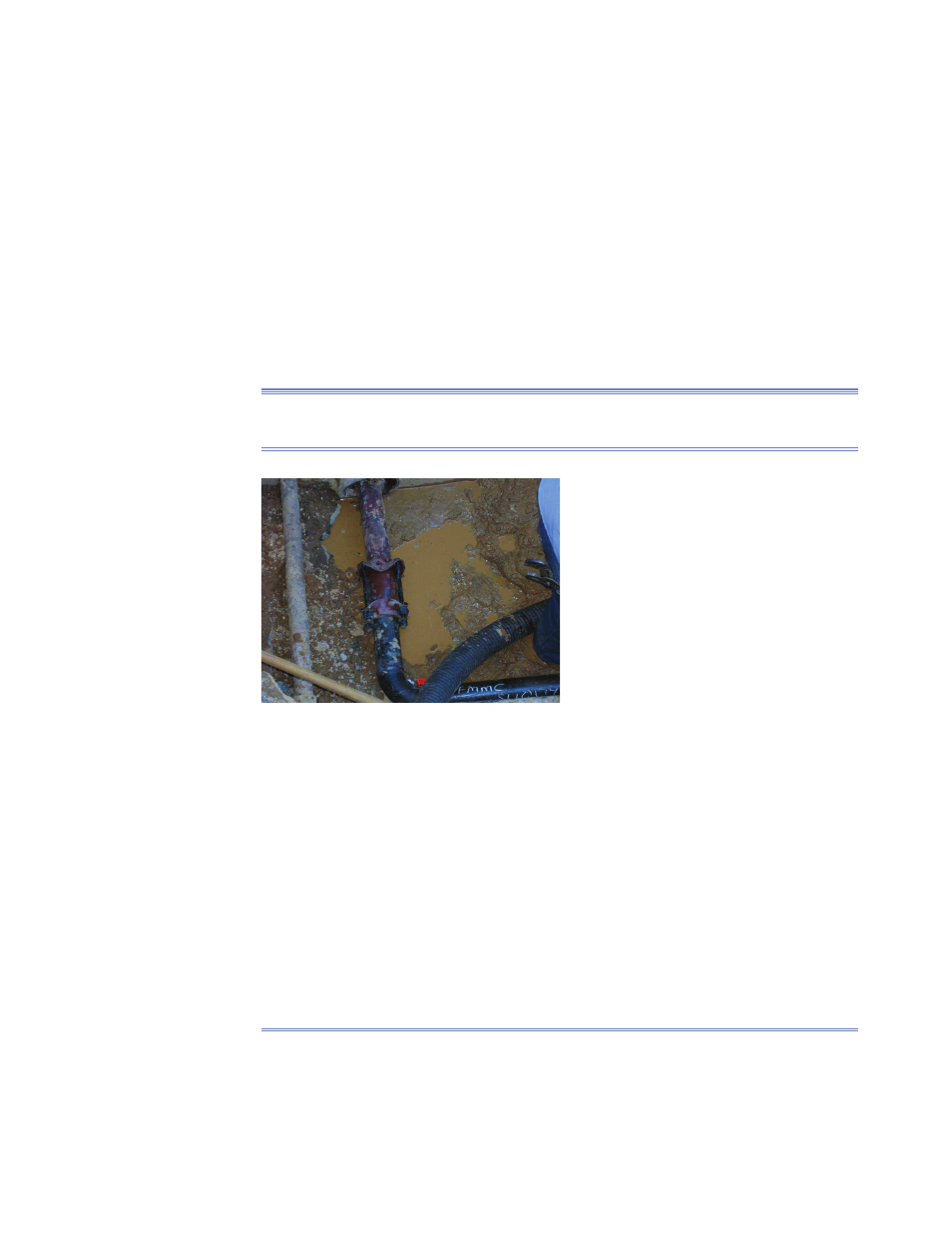D.3 water systems – Retrotec USACE User Manual
Page 172

D42 ENERGY & PROCESS ASSESSMENT PROTOCOL
HVAC systems are used to control space temperature and humidity as well as
to provide fresh air for ventilation. When spaces are used for varying purposes
throughout a day, week, or year, the space condition requirements also vary.
For example, an occupied offi ce space needs to have conditions suitable for
human comfort, but when everyone goes home, then the space is used for
storage, which allows a relaxation of the temperature requirements (Figure
D67). Ventilation rates could also be greatly reduced. The result is a saving of
energy used to temper the air and power the fan motor. When varying sched-
ules of spaces are noted, check the HVAC system control schedule to deter-
mine whether it corresponds to the occupancy schedule.
D.3 Water Systems
D.3.1 Water Leaks (Waste)
Figure D68. Repaired leaking pipe segment
in underground distribution system.
Any leak results in a waste of energy and the water resource (Figure D68). To
distribute water through a distribution system requires a pump to move the
water. A supply water leak causes extra water to be pumped so the water users
obtain the quantity they need. In addition, a leak wastes the chemicals used to
treat the water since extra water is consumed. A leak in a sewer system causes
possibly contaminated fl uids to escape into the environment. Leaks can occur
at pipe fi ttings, gaskets in the piping system, packing in valves and pumps, in
corroded pipe, and through holes in fl exible pipe. The amount of energy lost
by a leak is dependent on the system pressure and the leak size.
D.3.2 Heat Trace Equipment Operating above 4.4 °C (40 °F)
Outside Temperature (Waste)
Outside equipment and distribution systems that contain water are often heat-
traced for freeze protection. The heat trace system can use steam or electrical
energy to provide the necessary heat. The pipe or electrical cable is run along
